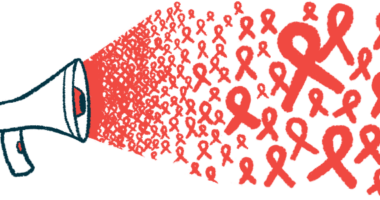ALS speech problems
Speech problems are among some of the most common symptoms of amyotrophic lateral sclerosis (ALS), a progressive neurological disease that causes the deterioration of motor neurons, the nerve cells that control voluntary muscle movements.
In about one-third of patients — those diagnosed with the bulbar onset form in which muscles in the head and neck are the first ones affected — difficulty speaking is not only common but one of the earliest symptoms of the disease.
The symptom also develops in people with limb-onset ALS, a form of the disease marked by initial symptoms of weakness in the arms and legs, although it generally becomes evident in later stages of ALS disease progression.
ALS, often called Lou Gehrig’s disease, also can be classified into two additional types based on family history: it may be inherited, known as familial ALS, in which more than one person in a family has the disease, or develop in people with no known family history of ALS, known as sporadic ALS. Trouble speaking is common in both types.
More than 80% of people with ALS will have some difficulty articulating words and speaking in a way that other people can understand (dysarthria). Not only does this make it hard to talk and communicate, but it can lead to social isolation and mental health issues such as depression. And it can make it even more challenging to be living with ALS.
As speech problems develop earlier in people with bulbar-onset ALS, these patients also tend to lose the ability to speak faster earlier in the disease course, compared with limb-onset patients.
One study estimated most people with the bulbar-onset form had significant reductions in speaking rate (the number of words a person can say in a minute) 23 months after their first symptoms, and their speech became somewhat unintelligible at 32 months. In turn, those with the limb-onset form of ALS retained functional speech for 60 months after symptom onset.
A speech therapist can work with ALS patients from the earliest signs of speech or voice changes and provide a number of strategies to help with communication challenges. Voice banking and assistive communication devices also can help with ALS speech problems.
How ALS leads to speech problems
Speaking clearly requires precise movements of the mouth and tongue in order to produce clear and distinct sounds, which is referred to as articulation.
As muscles weaken over time in people living with ALS, they become less able to control parts of the body that are needed for a normal speech, including the tongue, lips, larynx — also known as the voice box, where vocal cords are located — and jaw. As a result, it becomes harder to articulate certain sounds, limiting their ability to speak clearly and be understood.
ALS affects upper motor neurons, which are responsible for passing signals from the brain to the spinal cord, and lower motor neurons, which connect the spinal cord to all the muscles in the body. While damage to the upper motor neurons generally is associated with muscle spasms and tightness, symptoms of lower motor neuron degeneration are more often linked with muscle weakness and twitching.
Dysarthria, the term used to describe speech problems such as slurred speech or a hoarse voice, can occur in ALS as a result of damage to either of these motor neurons. The exact speech symptoms experienced by people generally will depend on the extension of damage to each type of neuron.
For example, when people with ALS experience most damage in their upper motor neurons, they may experience spastic dysarthria, marked by slow and slurred speech and a strained voice. In turn, if lower motor neurons are the most damaged, people with ALS may experience symptoms of flaccid dysarthria, including a breathy and nasal voice and difficulty producing sounds. People with ALS usually have a mixed form of dysarthria, with symptoms from both upper and lower motor neuron damage.
Chronic respiratory issues, which are common in people with ALS, also can affect speech. Due to weakness in lung muscles, they may feel tired after speaking and have trouble projecting their voices.
Approved ALS treatments can help to slow the progression of the disease but are generally unable to reverse the damage that’s already occurred. As a result, these medications have little to no impact on established symptoms, and complementary therapies are needed to help manage symptoms such as speech problems.
While speech problems in ALS are generally managed by speech therapists, people with vocal strain and speech problems are often first referred to an otolaryngologist (ear, nose, and throat doctor) to rule out other causes.
Examples of speech problems
ALS speech symptoms can cause a voice to sound:
- rough, strained, or hoarse
- breathy, quiet, or nasal
- slow, slurred, and difficult to understand.
People with ALS also can have difficulty controlling the pitch and volume of their voice and experience trouble pronouncing certain consonants.
It may become tiring to speak, especially toward the end of the day. As voice projection becomes difficult, it is not uncommon that people with ALS start speaking less or rely on shorter sentences to communicate.
Together, these complications can make communicating difficult and even affect a person’s confidence and ability to engage in social activities.
Speech can worsen quickly, especially in a person with the bulbar form of ALS, causing them to lose articulation and speak slowly with more and more nasal tones and a hoarse, effortful voice.
As their disease progresses into more advanced stages, people with ALS may lose their ability to speak altogether.
ALS speech therapy
In most people with dysarthria, speech therapy includes exercises that strengthen the muscles in the mouth, jaw, and throat muscles.
However, in people with ALS, the muscles that are still functioning are already performing extra work to compensate for weakness in other muscles, so frequent and longer periods of rest are extremely important. Exercises to strengthen head and throat muscles have little to no impact on speech.
For these reasons, ALS speech therapy mostly is focused on helping a person with ALS develop strategies to speak more clearly to retain their ability to communicate.
These communication strategies may involve helping them cope and adapt to their speaking difficulties, such as slowing their speech rate, speaking face to face, or replacing words for others that are easier to articulate.
Also, people with ALS may benefit from some lip and tongue exercises that help them enunciate certain words more clearly, as well as exercises that improve breathing to bolster articulation.
Other tips that a speech therapist may give to improve communication include:
- Family and friends can learn to interpret nonverbal language by paying attention to lip movements, facial expressions, and gestures.
- Social events and conversations should be scheduled for daytime or when people have the most energy.
- Muscles involved in speaking can become strained during the day. Not talking helps the muscles to recover and can improve speech.
- Massaging the jaw and area around the mouth can reduce muscle tension and improve range of motion.
- When the volume of the voice has decreased but the voice is still clear, an amplifier or a small microphone can help increase comprehensibility and conserve energy.
- Online videos for students of English as a second language can be used by people with ALS who want to practice their sounds and vocal rhythm.
A speech therapist also can teach people with ALS how to use augmented and alternative communications devices and other nonverbal methods of communication, which are particularly important when the ability to verbally communicate is severely impaired.
It’s recommended that therapy starts as soon as possible after the first signs of speech or voice changes, and the approaches used should be modified as the ability to speak changes.
To ensure people with ALS receive the best care possible at each stage of their disease, speech problems should be routinely measured to identify changes as early as possible and make the necessary adjustments.
The revised Amyotrophic Lateral Sclerosis Functional Rating Scale, a validated measure of disease progression that monitors the ability to do activities of daily life, includes a subscale that helps evaluate speech problems.
A therapist also will document the speech rate and other changes in speech or voice characteristics to monitor speech decline and make appropriate decisions regarding future speech support.
Overall, careful monitoring of the vocal abilities may be overseen by a multidisciplinary team of physicians, which can include not only a speech and language therapist, but also an otolaryngologist and a physiatrist (physical pain management doctor), physiotherapists, dietitians, and even caregivers.
Strategies to help
When people with ALS begin to lose the ability to use verbal speech, they can receive training to use augmented alternative communication (AAC) approaches that help them communicate without requiring actual speech.
Some electronic and nonelectronic AAC methods include:
- picture and symbol communication boards
- alphabet board
- pencil and paper
- sign language
- eye-gazing devices
- speech generating devices
- computer or tablets equipped with text-to-speech apps.
In some of these methods, training for family members and caregivers may be needed. For example, if a person with ALS decides to use a communication board or write a sentence on paper, their caregiver should speak the words or phrases aloud to make sure they are understanding the right message.
Not all methods will work for every person. When someone with ALS begins to have trouble being understood, they already may be experiencing signs of severe weakness in the upper limbs, so tasks involving hand or arm movements, such as sign language or grabbing a pencil, may not be an option.
These approaches also can vary as a person’s needs change, but a speech therapist can continuously work with their patient to review their options and develop tailored solutions that suit them best at any given time.
Standard voices on speech generating devices or text-to-speech apps sometimes can sound mechanical or robotic, but there are devices that can generate speech using a person’s own voice.
Those require patients store their voice or specific messages before little to no changes in voice are evident, so it’s generally recommended patients plan ahead during the early stages of the disease, and make the necessary accommodations and preparations for the AAC methods they are planning to use.
Voice banking involves recording samples of a person’s speech and creating a synthetic version of that person’s voice. Soon after an ALS diagnosis, people should create a stock of spoken words to be used by communication software. In the U.S., there are a number of companies that offer this service, along with some chapters of the ALS Association.
Message banking, on the other hand, allows people to record commonly used phrases and expressions in their own voice, retaining their own cadence and tone. These may include words of affection, such as “I love you” or “It’s great to see you.” People with ALS also should record sentences that will help them convey their wants and needs in specific situations. The recordings can then be played on any speech generating device or via certain text-to-speech apps.
Speech therapists can help guide through the existing message and voice banking technologies and make appropriate recommendations that will best suit a person’s situation.
ALS News Today is strictly a news and information website about the disease. It does not provide medical advice, diagnosis, or treatment. This content is not intended to be a substitute for professional medical advice, diagnosis, or treatment. Always seek the advice of your physician or other qualified health provider with any questions you may have regarding a medical condition. Never disregard professional medical advice or delay in seeking it because of something you have read on this website.
Recent Posts
- Actor Eric Dane joins Target ALS board after his own diagnosis
- Device for slowing ALS progression wins FDA breakthrough status
- Wreath season ends; a season of being an ALS caregiver stretches on
- Oral therapy NUZ-001 cleared by FDA to join platform trial for ALS
- For the new year, I choose to live in the present and move forward
Related articles

 Fact-checked by
Fact-checked by 




